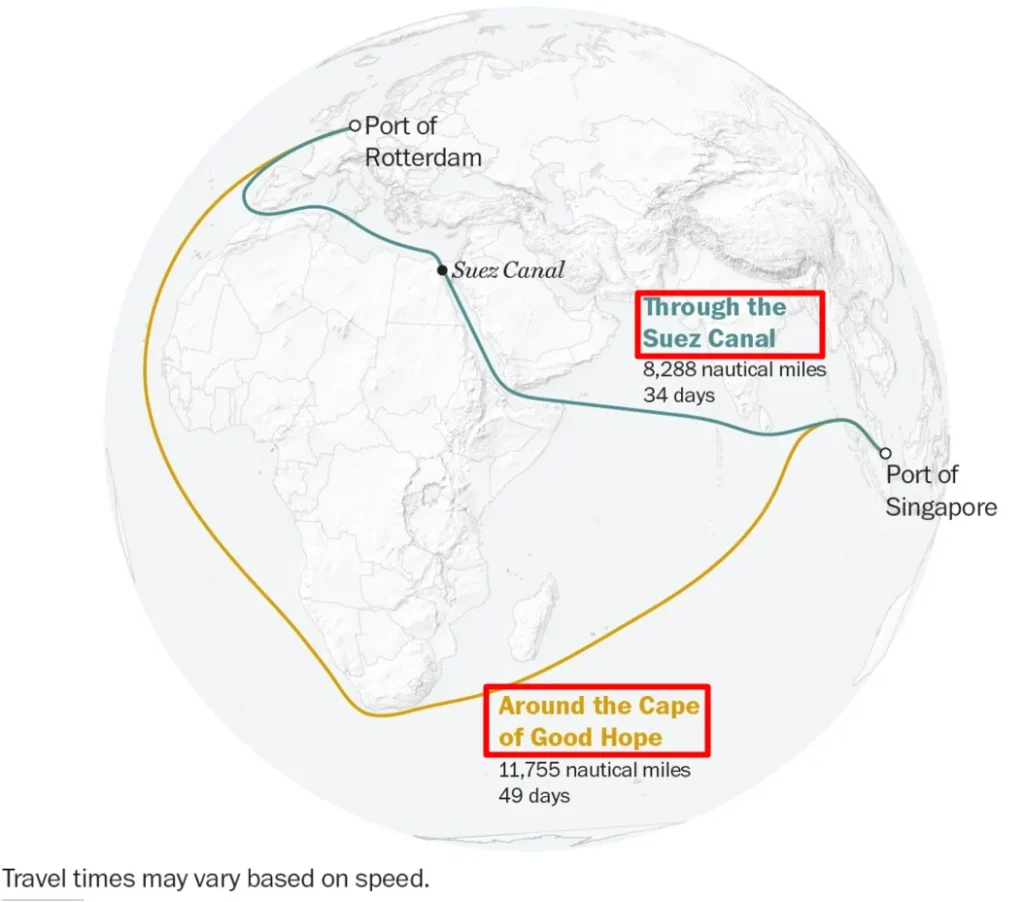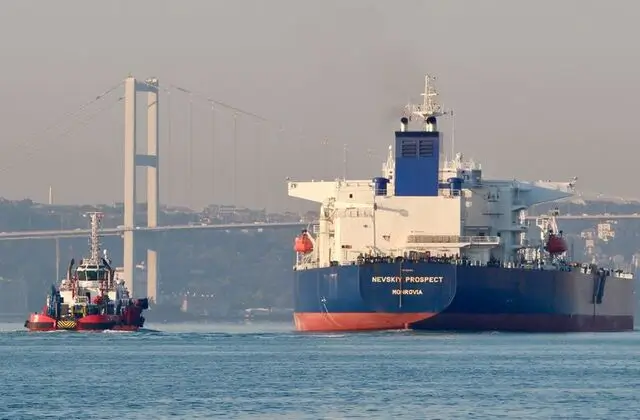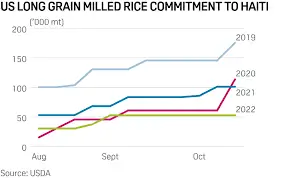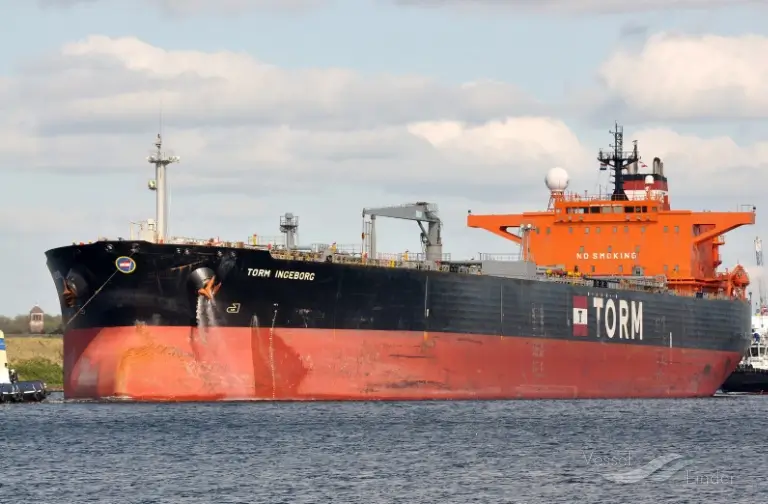1st March 2024
The red sea crisis
The red sea crisis has brought about significant challenges and uncertainties for global shipping. With ongoing conflicts and security threats in the region, the safety and efficiency of maritime trade have been compromised.
The impact of this crisis extends far beyond the immediate vicinity, affecting international trade routes and supply chains across the globe. In this article, we will explore the implications of the red sea crisis on global shipping and the measures being taken to address the challenges it presents.
What exactly is the red sea crisis?
The red sea crisis is a series of attacks on commercial shipping vessels in the red sea by the Houthi rebels of Yemen, who are backed by Iran. The attacks have disrupted the trade and security of the region, these security threats have resulted in heightened insurance costs for shipping companies, as well as increased costs associated with protective measures to ensure the safety of cargo and crew members.
Furthermore, the rerouting of shipping lanes due to the red sea crisis has imposed additional costs and delays on the global shipping industry.
These re-routings have disrupted established supply chains and increased transportation distances and have forced many cargo ships to take a longer and more expensive route around the cape of good hope in Africa, leading to higher fuel costs and longer transit times. As a result, the overall cost of shipping has significantly increased.
Piracy tax
If you are looking for an analysis of the impact of such crises on shipping rates, something similar was done in the context of Somali piracy where it was found that piracy caused an increase in the transport cost of around 8% this ‘piracy tax’ was passed on to the consumers of traded goods.
The red sea crisis is likely to have a similar impact on shipping rates, resulting in higher costs for goods transported through the region.
Why is the red sea crisis happening?
The red sea crisis is a result of the ongoing conflict in Yemen, which has been raging since 2014. The conflict pits the internationally recognized government of Yemen, backed by a Saudi-led coalition, against the Houthi rebels, who control the west of the country, including its red sea coast.
The Houthis have been using their control of the red sea coast to launch attacks on commercial shipping vessels, especially those heading to or from Israel. During such crises, motives can also include a desire to disrupt the flow of resources to adversaries, assert control over maritime territories, or influence political outcomes by leveraging the economic impact.
It should be noted that the specific motives can change with the evolving political and military landscape, and involvement in such crises can differ based on the current situation in a region.
Who is involved in the red sea crisis?
The red sea crisis has exposed the geopolitical rivalry and competition among the countries bordering the red sea, as well as the international powers such as the US, China, and Russia. The red sea region is strategically important for several reasons, such as:
- The red sea is a crucial waterway connecting the Mediterranean sea to the Indian ocean via the Suez Canal. This route is one of the world’s most heavily used shipping lanes, carrying a significant portion of maritime trade.
- Bab al-Mandab this narrow strait at the southern end of the red sea is a strategic chokepoint through which all ships must pass to enter or leave the red sea. Its control is critical given that any blockade or security threat in the area could disrupt the passage of ships and affect global trade.
- It is a transit point for oil and gas from the Persian Gulf to Europe and North America. To the global markets, and a potential site for alternative energy sources such as wind and solar.
- It is a hotspot for migration and refugee flows, environmental degradation, piracy, terrorism ,drug trafficking, human trafficking, and illegal fishery activities, and human rights violations, which require more cooperation and coordination among the countries on both sides of the red sea as well as the international community.
Implications for USA, China, and Russia
The red sea crisis has taken a concerning turn with the recent escalation of attacks on shipping lanes, prompting various implications for key global players like the United States, China, and Russia. Each country faces distinct challenges and opportunities in navigating through this tumultuous situation.
United States
The us is deeply vested in the security of the red sea region, particularly regarding navigation freedom and countering extremism. The crisis raises alarms about regional stability and potential threats to us military assets.
Economically, disruptions in red sea shipping could translate into higher costs for American consumers and businesses, particularly affecting oil and goods imports from Asia and Africa.
Diplomatically, the US is expected to engage in efforts to de-escalate tensions and seek peaceful resolutions, possibly in collaboration with international partners.
China
China’s heavy reliance on seaborne trade renders it vulnerable to disruptions in the red sea, affecting crucial supply chains and energy imports, notably oil from the middle east.
The crisis introduces uncertainties and risks for China’s significant investments in regional infrastructure projects. Security-wise, China’s interest in bolstering its military presence in the red sea may intensify, necessitating enhanced security measures to safeguard its interests.
Russia
Although Russia primarily relies on pipelines for oil exports, the red sea crisis could potentially impact global oil prices, affecting Russia’s revenue streams. Geopolitically, Russia might perceive the crisis as an opportunity to assert influence in the region and enhance its negotiating leverage.
Diplomatically, Russia’s stance on the red sea crisis will likely be shaped by its complex relationships with other involved actors, such as the US and China. As the situation continues to evolve, the full extent of its impact on these countries remains uncertain.
Responses and strategies will be contingent on factors like the crisis’s severity, international cooperation efforts, and regional dynamics. Vigilance and cooperation will be pivotal in navigating through this challenging period.
How does the red sea crisis affect India?
India is one of the countries that has been affected by the red sea crisis, as it relies heavily on the Suez Canal for its trade with Europe, the US, and Africa according to some estimates, about 70% of India’s western hemisphere cargo has been re-routed through the cape of good hope, resulting in higher freight costs and longer transit times.
This has impacted India’s exports and imports, especially of low-value, high-volume goods and perishables. India has also expressed its concern over the security situation in the red sea, as it affects the freedom of navigation and commerce in the vital waterway.
How is India responding to the red sea crisis?
India has initiated a diplomatic outreach to the countries involved in the red sea crisis, such as Saudi Arabia, Iran, Yemen, Egypt, and Sudan, to protect its trade and strategic interests.
India has also participated in the us-led maritime coalition to protect the shipping lanes in the red sea. India has deployed its naval ships, such as INS Visakhapatnam, to escort and assist the Indian and foreign vessels in the region.
India has also rescued some of its crew members who were held hostage by the Houthi rebels in a hijacked ship.
India’s External Affairs Minister, S Jaishankar, visited Iran on January 10, 2024, and expressed India’s concern over the situation in the red sea, and said that India is closely monitoring the developments. He also said that India is in touch with its partners and stakeholders in the region, and is ready to contribute to the peace and stability of the red sea.
Also read : U.S. Sanctions on Russia’s Tanker Group Sovcomflot
What are the challenges and opportunities for india in the red sea crisis?
Challenge
It affects India’s economic and energy security, as well as its relations with the regional and global players. Impacting industries reliant on timely imports and exports. A persistent threat could necessitate continuous naval deployments and the potential risk of conflict escalation affecting Indian interests in the region.
Opportunity
It showcases India’s role and responsibility as a net security provider and a maritime power in the Indian ocean region. It also opens up new avenues for cooperation and dialogue with the countries on both sides of the red sea.
Recommendations for india and the international community to address the red sea crisis
India should also explore alternative routes and modes of trade and transportation, such as the International North-South transport corridor (INSTC), which connects India with Europe and central Asia via Iran and Russia and the Chabahar port, which is being developed by India in Iran as a gateway to Europe, Afghanistan and central Asia, thus avoiding Pakistan.
The crisis may also reinforce India’s investment in Chabahar port, as it serves strategic interests by providing an alternative route to the volatile strait of Hormuz and the red sea.
India should also diversify its sources and supplies of energy and commodities and invest in renewable and clean energy options.
The red sea crisis highlights the need for a coordinated international response to address these security challenges. Such a response would involve collaboration between governments, international organizations, and private stakeholders to enhance maritime security measures, share intelligence and information, and establish effective legal and judicial frameworks to combat maritime crime.
The international community should support the un-led peace process in Yemen, provide humanitarian aid and relief, impose sanctions and pressure on the violators, and promote cooperation and coordination among the red sea countries, respecting their sovereignty and ensuring their security and stability.
Conclusion
The Red Sea crisis is a complex and multifaceted issue, which has implications for the trade and security of the region, as well as for the global economy and stability.
The crisis is a result of the ongoing conflict in Yemen, which has been exacerbated by the geopolitical rivalry and competition among the countries bordering the red sea, as well as the international powers such as the US, China, and Russia.
The crisis has affected many countries, especially India, which relies heavily on the Suez Canal for its trade with Europe, the US, and Africa. India has taken some diplomatic and military steps to deal with the red sea crisis, and has also expressed its concern over the situation.
The red sea crisis is a challenge and an opportunity for India and the international community, which requires more cooperation and coordination to address the crisis and prevent further escalation.
Click here to follow us on Social Media to Get more updates like this





























